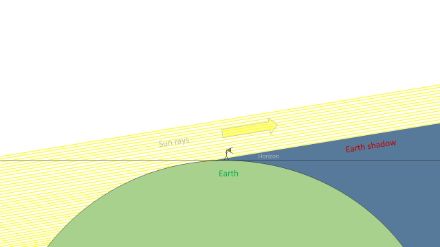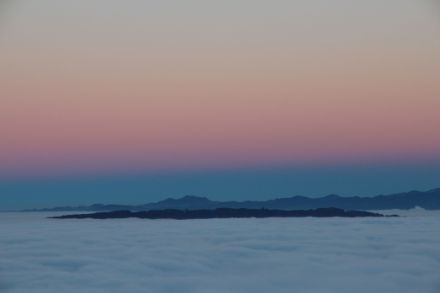Service Navigation
Search
It’s all about scattering
To start with, let’s take a brief but simple excursion into physics. For shadows to be cast in the atmosphere, small water droplets or other airborne particles (known as aerosols) must be present. When sunlight hits these particles, it is scattered in all directions. Due to the size of the particles, the light is mostly scattered in the forward direction, creating very bright areas.
A simple example of forward scattering is a dirty windowpane (such as on a car or a house) through which headlights or direct sunlight shine. Due to forward scattering around the dust particles, the glare is significantly amplified.
But let’s return to the atmosphere. If an obstacle (e.g. a cloud, tree or building) blocks the sunlight, we get shade in this area and a darker zone is created.
Further information on the topic of light scattering, and why it is also responsible for the sky being blue, can be found in the weather glossary (Die Farbe des Himmels). But that’s enough theory! Let’s now look at some images.
Shadow rays
Shadow rays often occur when the sun is low in the sky. In the image below, sunlight is partially shaded by the trees and the mountain. The remaining sunlight is scattered by the aerosols present in the atmosphere, forming bright zones.
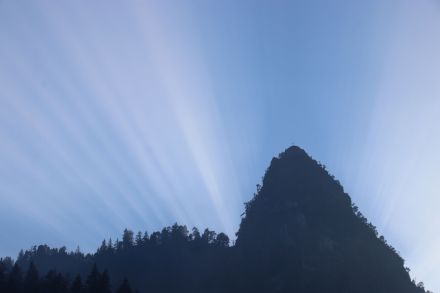
The fanning out of the rays is an optical illusion, similar to railway tracks that appear to converge in the distance. In reality, the rays are parallel. We will return to this point later.
Crepuscular and anti-crepuscular rays
Shadow rays can be seen in the sky at sunrise or sunset on some days. These are often caused by cumulus or thunderclouds that are farther away.
Usually, they appear to converge towards the sun, in which case they are referred to as twilight or crepuscular rays. Occasionally, they extend across the entire sky and appear to converge again at a point opposite the sun. This comparatively rare phenomenon is called anti-twilight or anti-crepuscular rays. On 11 August 2023, one such spectacle appeared shortly after sunset in the sky
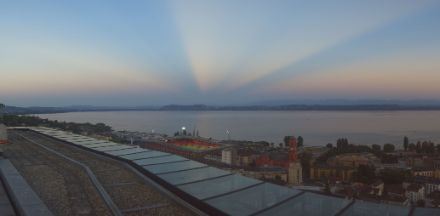
The cause of these shadow rays could be seen clearly in the satellite image: thunderclouds over Eastern France. The shadow cast by the clouds even appeared on the satellite images. Incidentally, with the help of the satellite image, we can “prove” that the shadow rays do actually run in parallel.
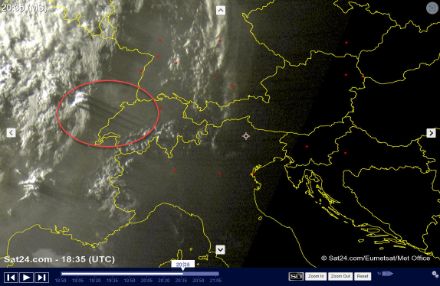
Fog rays
Impressive shadow rays can also form at the edge of fog. This can be seen in a few pictures.
Earth shadows – the mother of all shadows
Lastly, we come to a somewhat different shadow. When looking towards the east on a clear day, a dark stripe can often be seen on the horizon after sunset. This gradually drifts higher and eventually fades. This is the shadow of the Earth projected into the sky. The bright zone above the dark stripe is still illuminated by the sun, and the reddish light is scattered by aerosols. The same phenomenon can also be observed shortly before sunrise in the western sky.
